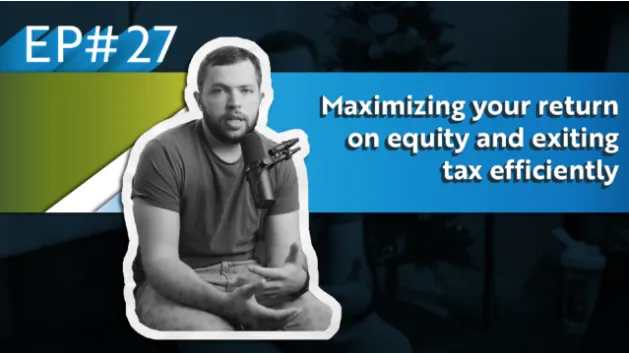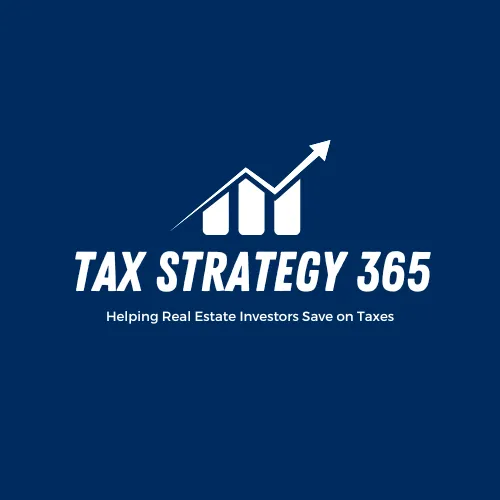Latest blogs and articles
Leading you to a better financial future.

Maximizing Your Return on Equity and Exiting Tax Efficiently
Maximizing Your Return on Equity and Exiting Tax Efficiently
How do I calculate my return on equity? What return on equity should I aim for? How do I exit tax efficiently on my property?
Return on Equity
The Return on Equity (ROE) calculation is crucial for real estate investors to assess the efficiency of their investment. ROE measures the return generated from the equity invested in a property compared to the cash flow it generates. Here's how it works:
Definition: ROE is the ratio of the cash flow generated by a property to the equity invested in it. Equity can be either forced (such as through renovations) or contributed through capital (initial investment).
Forced Appreciation: In markets like California, Texas, New York, and Florida, properties often experience significant appreciation. While appreciating properties are generally positive, failing to capitalize on the increase in equity can mean missing out on potential gains.
Example Calculation: Consider a property initially purchased for $50,000 generating $5,000 in cash flow, resulting in a 10% ROE. If the property appreciates to $100,000 while maintaining the same cash flow, the ROE drops to 5%. This reduction in ROE illustrates the importance of evaluating whether the equity could be better utilized elsewhere.
Opportunity for Higher Returns: Assessing whether reallocating equity to another asset could yield a higher ROE is essential. While exiting cash flow-producing properties may seem counterintuitive, if it leads to a higher ROI percentage, it may be beneficial.
Considerations: Two critical factors must be considered before deciding to exit a property:
Wherewithal to Pay: Selling a refinanced property may result in a capital gain tax that could outweigh the returns generated after accounting for sale fees.
Mortgage Rates: Changes in mortgage rates, such as an increase from 3% to 6%, can significantly impact the outcome and should be factored into the decision-making process.
Closing Costs and Fees: These expenses associated with selling the property must be accounted for to accurately determine the potential ROI.
Exiting Tax Efficiently
This idea of maximizing Return on Equity is all well and good, but can fall apart quickly when we exit a property and are left with a substantial tax bill. This is where Exiting Tax Efficiently becomes very important. The podcast gives three excellent ways to do this.
1) 1031 Like Kind Exchange
A 1031 like kind exchange is a way to trade up in assets while deferring the capital gains tax bill. This is a great method to exit efficiently. It allows us to capitalize on appreciated assets without being punished for disposing of them. However, this method does not come without its drawbacks. The most obvious is timing. A 1031 exchange requires identifying the replacement property within 45 days and closing on that property within 180 days. We can’t miss that window! This problem is linked directly to what kind of market we’re in. In 2020-2021 it was very hard to do a 1031 exchange because properties were exiting the market so quickly. Sometimes in just a day. When turnover is so high, properly identifying a property and closing on it in such a short time frame can be near impossible. A good rule of thumb is to be extra careful in a sellers market. It might not be the best time to try a 1031 exchange. In these types of markets it is important to consider other strategies.
2) Poor Man’s 1031 Exchange
Similar to the 1031 exchange is the poor man’s 1031 exchange. This, as the name implies, is the same concept but with more wiggle room. The idea is selling one property outright and purchasing another in the same year. When this is done, accelerated depreciation can be used on the new property to offset the gain of the old. It archives the same benefit without going through the struggle of a normal 1031 exchange. It avoids the timing issue, the paperwork, and holds on money from the property sale. These things together makes it not only easier to do, but can also open the door to more opportunities. Another benefit of this method is getting a step up in cost basis for the new property. This means when we buy the new property it is considered at cost as opposed to what we paid for the previous property. This would not be possible with a traditional 1031 exchange.
3) Investing in Syndications
Investing in syndications is very similar to the poor man’s 1031 but could be more appealing for someone who wants to be more hands off. Maybe they don’t want to divert more of their time or go through the hassle of purchasing and maintaining another property. This option involves selling the property and investing that money into syndications. These syndications are also capable of bonus depreciation and cost segregation on their assets which will pass back losses. These losses can offset the gain from the sale of property. This method is the most passive way to increase return on investment and exit tax efficiently with the least effort.
4) Sell in Lower Taxable Income Years
The last method is the most straightforward. Selling assets in lower taxable income years is the simplest way to exit efficiently. It also can also be combined with other methods. When we sell in years with a lower tax bracket, the tax incurred on the gain is reduced. This allows us to maintain more of the benefit of the appreciated asset. Sometimes the simplest solution is the best and this small detail could lead to saving big on existing properties.
Maximizing Your Return on Equity and Exiting Tax Efficiently
Join my Facebook group with over 9,000 real estate investors!

Choose Your Journey to Tax Excellence
Journey 1
Building a Tax Advisory & Consulting Practice
Scale, streamline, and systemize your advisory business.
Turn compliance clients into year-round advisory opportunities while mastering operational efficiencies for sustainable growth. This track covers pricing, hiring, marketing, and client engagement essentials to help you build a practice you love.
WHAT YOU’LL LEARN:
Crafting solid engagement letters and pricing models.
Transforming compliance clients into year-round
partners.
Marketing
strategies that drive consistent growth.
Recruiting and training the right team to scale your business.
Bonus:A Power Checklist for the ultimate year-end tax planning session.
Journey 2
Tax and Legal Foundations: Core Strategies for All Levels
Master the fundamentals that drive financial success.
Perfect for business owners and advisors, this track delivers essential insights on asset protection, tax planning, estate strategies, and IRS compliance.
WHAT YOU’LL LEARN:
Unlock estate planning with Revocable Living Trusts.
Maximize retirement savings through Solo 401(k) plans.
Real estate strategies: Short-term, long-term, and self-rentals.
Learn asset protection that actually works.
Navigate IRS resolution with confidence and ease.
Journey 3
Advanced Insights: Unlock Complex Tax Strategies
Top-tier strategies for high-value clients.
Designed for experienced professionals, this track offers in-depth guidance on prime tax strategies, entity structuring, and payroll solutions. Gain the insights needed to handle complex business scenarios with confidence.
WHAT YOU’LL LEARN:
Report multi-entity structures with Forms 1065 & 1120S.
Maximize tax savings using Bonus Depreciation & Section 179.
Seamlessly relocate clients to tax-free states.
Navigate business sales and acquisitions smoothly.
Use 105 Plans to save clients on healthcare costs.

2024 Learn Like A CPA. All rights reserved.